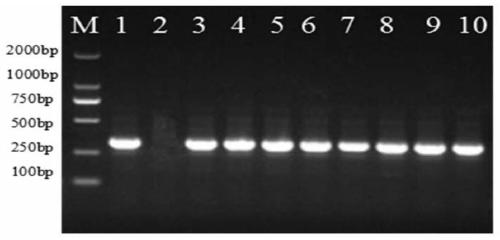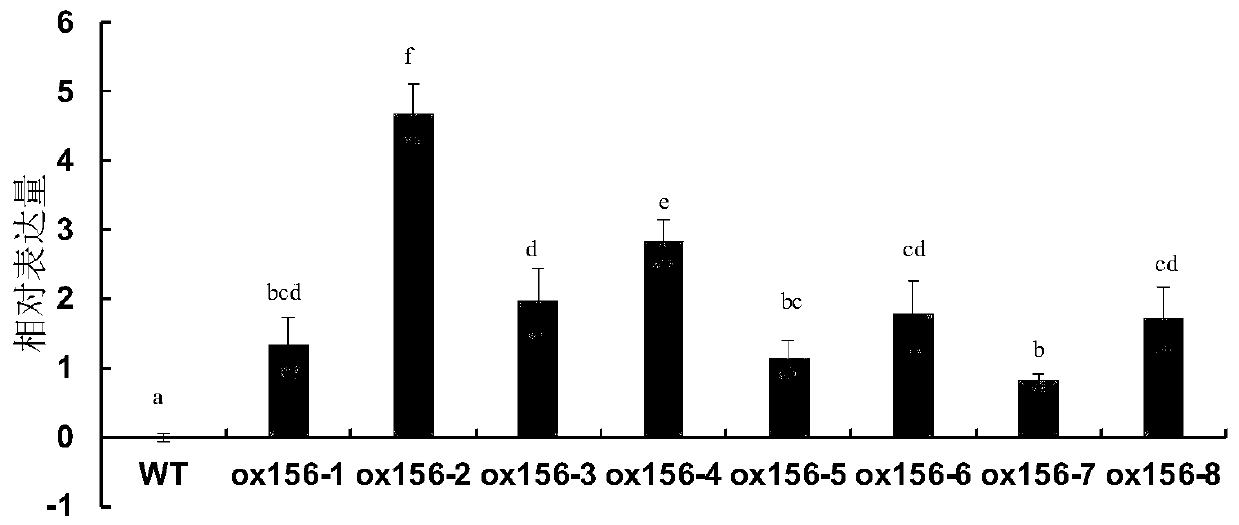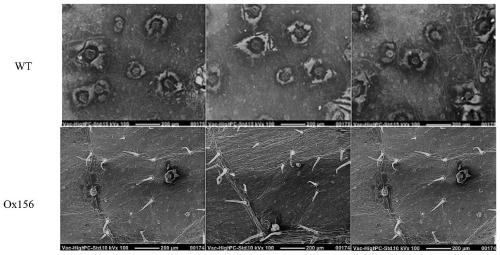Application of miR156 and related biomaterial thereof in regulating disease resistance of plants
A biomaterial and disease resistance technology, applied in the application field of regulating plant disease resistance, can solve problems such as unreported research, and achieve the effect of enriching forest tree breeding resources
- Summary
- Abstract
- Description
- Claims
- Application Information
AI Technical Summary
Problems solved by technology
Method used
Image
Examples
Embodiment 1
[0066] Example 1, the application of miR156 in regulating the disease resistance of birch
[0067] 1. Construction and identification of transmiR156 birch
[0068] The Gateway technology was used to construct the overexpression vector pGWB2-miR156, and the genetic transformation of birch was carried out by using the zygotic embryo method mediated by Agrobacterium tumefaciens. The miR156-transformed birch was identified by PCR and quantitative PCR. Specific steps are as follows:
[0069] 1. The construction of miR156 birch
[0070] (1) Construction of overexpression vector pGWB2-miR156
[0071] The 192bp DNA fragment containing the mature sequence of miR156 (the DNA fragment shown in the 221-412 position of sequence 3) was constructed into the entry vector pENTR (purchased from Invitrogen Company) by Gateway technology, and then used GatewayLR Clonase™ II Enzyme Mix (purchased from Invitrogen Co., Ltd.) carried out homologous recombination of a DNA fragment with a size of 19...
PUM
 Login to View More
Login to View More Abstract
Description
Claims
Application Information
 Login to View More
Login to View More - R&D
- Intellectual Property
- Life Sciences
- Materials
- Tech Scout
- Unparalleled Data Quality
- Higher Quality Content
- 60% Fewer Hallucinations
Browse by: Latest US Patents, China's latest patents, Technical Efficacy Thesaurus, Application Domain, Technology Topic, Popular Technical Reports.
© 2025 PatSnap. All rights reserved.Legal|Privacy policy|Modern Slavery Act Transparency Statement|Sitemap|About US| Contact US: help@patsnap.com



